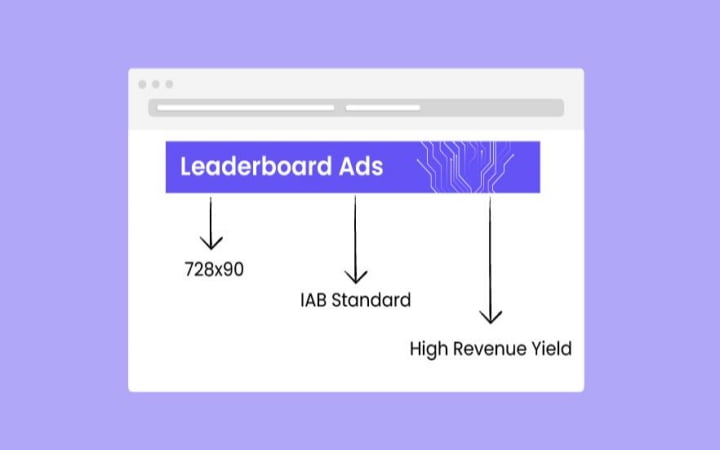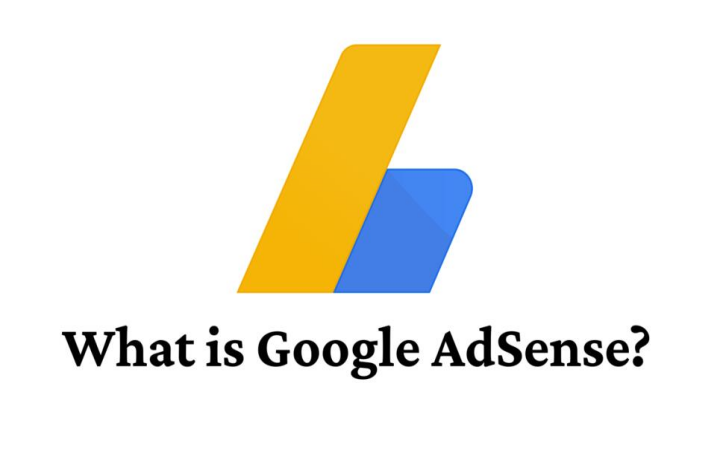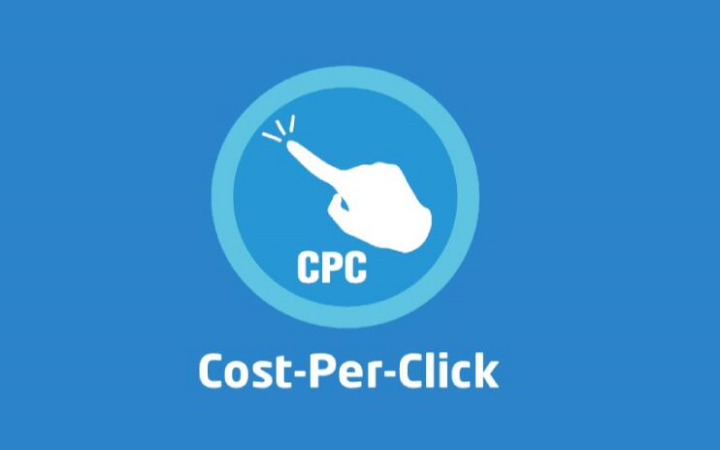In the realm of digital marketing, the quest to capture attention often feels like a high-stakes game of Chess. Your strategic move can mean the win or loss of a potential customer’s interest.
Yet, with the rise of ad-blocking technologies and waning attention spans, the stale banner ad has often found itself in a precarious position, outmaneuvered by more engaging ad formats.
However, one stalwart in the digital advertising landscape reigns supreme—a king on the chessboard, if you will—the leaderboard ad.

What Are Leaderboard Ads?
Leaderboard ads are one of the most common and recognizable formats of online display advertising. Positioned at the top of a webpage, leaderboard banners stretch across the page and typically dominate the viewing space.
These ads are hard to miss, and when implemented strategically, can effectively command user focus on the content or product they present.
The Purpose and Benefits
The main goal of a leaderboard advertisement is to draw the attention of the visitor during the very first couple of seconds upon entering a site and inspire them to act generally through visiting the website of the advertiser or interacting with their product.
The advantages of leaderboard advertisements for marketers, as well as material creators, are numerous:
- Increased Brand Visibility: Leaderboards, placed at the top of a website, gain high visibility from the start, making them excellent for brand recognition.
- High CTR Potential: A leaderboard ad can boast a high click-through rate (CTR) if it is designed and placed strategically.
- Enhanced Campaign Messaging: Their ample size means more room for creative expression, allowing for elaborate designs and detailed messaging.
- Effective for Announcements and Sales: They are great tools for highlighting time-sensitive offers, events, or sales as they grab attention quickly.
- SEO Amplification: When treated as fun experiences, they can help boost search rankings. This is because people spend more time on the page and engage more.
The Anatomy of a Leaderboard Ad
Leaderboard banners are big, rectangular ads with these typical sizes:
- Common sizes are 728×90 pixels, 970×90 pixels, or 980×120 pixels
- They can be still images or have animation
- They often show visuals and text side-by-side
Why Use Leaderboard Advertising?
Leaderboard ads are big ads. They stand out. This makes them good picks for ads. They have some cool benefits.
Visibility and Engagement
The big size of leaderboard ads makes them easy to see. They go across web pages. Folks see them right when they visit a site. This is great for grabbing eyes.
Credibility and Branding
Leaderboard ads on big sites look fancy. It makes brands seem like they are well-known. When people see the ads while browsing, it gives a sense of trust. This can help brands look good.
Good for Promotions and Calls to Action
The big size is perfect for ads that want quick action. Like ads for sales or deals that end soon. The large space lets these types of ads stand out.
Important Features of Leaderboards
Resolution and File Types
Your leaderboard images need to be super clear. Use high-resolution files like JPEG, PNG, or GIF. These file types look sharp online. And they load quickly because they don’t take up too much space.
Call to Action (CTA)
Your leaderboard design must have a strong call to action. This is a message that grabs people’s attention. It should make them want to click on your ad. Keep the text short and exciting. A good call to action can boost user interaction.
Responsiveness
Most people browse the internet on their phones or tablets. So your leaderboard ads need to work well on any device. They should adjust automatically to different screen sizes. That way, your ad will look great no matter what.
Types of Leaderboard Ad Campaigns
Leaderboard ads are very flexible. They can be used in many ways. Here are some popular ways to use leaderboard ads:
- Brand Awareness Campaigns: These ads help people know about a new product or brand. A well-made leaderboard ad can make people notice your brand.
- Product Promotion Campaigns: Leaderboard ads are big and eye-catching. They are great for showing off a product or service. You can highlight what makes it special or useful. This can get people interested and make them want to buy.
- Seasonal or Holiday Offers: Timing matters. A leaderboard ad at the right time can boost sales during holidays or big shopping events. People are looking for deals then.
- Event Promotion: Do you have a webinar, conference, or concert coming up? Leaderboard ads are great for sharing event details. This can help get more people to sign up or buy tickets.
- Lead Generation Campaigns: Offer something valuable like an e-book or course through a leaderboard ad. People will give you their email to get it. This helps you grow your email list.
Pros and Cons of Leaderboard Banner Ads
Understanding the benefits and limitations of any advertising format is essential. Here are some to keep in mind with leaderboard banner ads.
Pros
- High visibility and engagement
- Great for branding and awareness
- Suitable for both direct response and brand awareness campaigns
Cons
- Ad blindness can be an issue with overused or poorly designed leaderboard ads
- May not be as effective in driving conversions as certain other ad formats
- They can slow down page loading times if not optimized
Ways to Make Your Leaderboard Ads Stand Out
Making leaderboard ads that people notice takes skill. Here are some good tips for creating ads that people will pay attention to:
Design Tips for Eye-Catching Ads
People are drawn to ads that look great and different. Using colors and images well is key.
- Use Colors That Pop: Pick colors for your ad that stand out against the website background. But make sure the colors match your brand’s look.
- Keep It Simple: Don’t put too many things in your ad. Just a few clear words and images work best.
- Use High-Quality Images: Blurry or pixelated pictures can turn people away. Choose sharp, relevant images instead.
Tips for Writing Catchy Ads
The words in your ad are as important as the visuals. They need to be convincing, short, and to the point. The ad should tell a quick, exciting story that makes the user want to click without giving too much away.
- Eye-Catching Headline: The headline should grab people’s attention and show the main benefit or message.
- Attractive Offer: What does the user get? Include a clear and appealing deal.
- Sense of Urgency: For time-limited offers, create a feeling that people need to act fast. Hint that the offer is exclusive to make it more interesting.
Call-to-Action Optimization
A clear and persuasive call to action (CTA) is your ad’s lynchpin, guiding users to the next step. An effective CTA must be both clear and compelling:
- Understand Your Audience: Know who your ad is targeting, and speak their language with a CTA that resonates.
- Create Urgency: Phrases like “Act Now” or “Limited Time Offer” can push users toward making a decision.
- Use Verbs: Start CTA phrases with actionable verbs to encourage engagement. Words like ‘shop’, ‘sign up’, and ‘explore’ are excellent choices.
Speaking to the Right People
Your ads need to speak to the right folks. This means making ads that fit what your target audience likes and does. Here are some key things to think about:
- Demographics: Know the age, location, and interests of your ideal customer. These details help make ads that connect with them.
- Analytics Data: Look at your analytics to see which parts of your ads are getting the most traffic and conversions. This shows what’s working well.
- A/B Testing: Try out different versions of your ads to find out which ones really click with your audience.
Testing Different Kinds of Ads
A/B testing or split testing is when you make two versions of an ad. You show each one to different people. It helps you learn what works best for viewers.
- Try New Images: Pick images with different colors, things in them, or themes. See which one gets people interested.
- Change Your Words: Use new words for the headline or description of your ad. Check to see which words make people click more.
- Adjust Timing and Location: Put ads in different parts of a website or on other sites. Learn which places and times work best.
FAQs
What are some common mistakes to avoid with leaderboard ads?
Leaderboard ads are a popular choice, but some missteps can hurt their impact. One issue is clutter – too many visuals or text can overwhelm viewers. It’s wise to keep the design clean and focused. Ensuring the ad fits the website is also key. An ad for toys likely won’t do well on a site about finance. Sticking to a clear brand message throughout helps build recognition. Auto-playing videos or audio can annoy visitors too, so use these with care.
Can I use leaderboard ads for local businesses or events?
Leaderboard ads are very flexible and can promote local companies or happenings effectively. The key is targeting the right audience through location targeting and other local optimization tactics. If you run a bakery, aim your ads at people living nearby who may want fresh pastries. Or if there’s a community festival, target residents in that town or city. With smart audience targeting, leaderboard ads can showcase local offerings successfully.
Do Leaderboard Ads Work on Mobile?
Leaderboard ads can work on mobile devices thanks to responsive design. However, the smaller screen means the surrounding content matters more. An ad placed amid cluttered layouts may not grab attention as well. The mobile user experience should guide ad placement and formatting. Overall, leaderboard ads can be effective on mobile when used thoughtfully and adapted for those smaller displays.
Conclusion
Leaderboard ads may sometimes find themselves compared to their flashier, more dynamic siblings, but their simplicity and stability are virtues in the fast-paced digital advertising arena.
As an essential part of a well-rounded digital marketing campaign, leaderboard ads provide visibility, engagement, and a clear path to your website — a triumvirate of marketing goals if we’ve ever seen one.
In a world where the competition for consumer attention is fiercer than ever, leaderboard ads can be the chess piece that helps you assert your dominance on the board. With this guide, you can make sure your campaign isn’t just seen, but the move that everyone is talking about.


